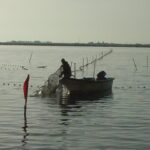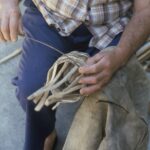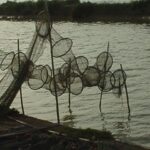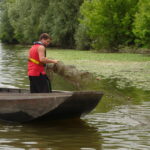Yellow eel
It is caught in a wide variety of ecosystems: lakes, Mediterranean lagoons, streams, fresh and salt marshes, rivers, estuaries, bays and coastal basins. This species shows a remarkable adaptation to variations in salinity and studies carried out on its otoliths (small calcareous concretions located in the inner ear of the fish) show that individuals can, after having colonised fresh water, leave for brackish water or even saltier water and then return to fresh water.This remarkable plasticity of its migratory behaviour allows it to colonise numerous environments when it no longer finds the optimal conditions for its growth and survival in a specific environment. This obviously requires that ecological continuity be ensured between the different habitats that it can colonise. This is often not the case, and since the middle of the last century it has encountered more and more hermetic obstacles and of great height. The maintenance of wetlands is often no longer ensured and these lands have often been considered in the estuarine parts as areas to be conquered and urbanised, in the middle parts of rivers as areas to be drained. Rivers are increasingly dammed up to protect against rising water levels, which limits the links between the river and the hydrological annexes, which are essential aquatic systems for the production of young eels.
Professional fishermen have always exploited these various environments and adapted their fishing gears to the ecosystems explored. Thus, in small tributaries, the bosselle and the cordeau (a bottom line with a limited number of hooks) are used; the fyke net is placed on the banks of rivers or lakes, and the bow net lines are anchored at the mouths of rivers; the capetchades (fyke nets placed behind a barrier net) are used in the Mediterranean lagoons. All these devices, developed since ancient times, capture eels of different sizes while they are on trophic migration or when they temporarily move from one ecosystem to another. With the exception of the cordeau, these fishing gears, which are regularly lifted, although not selective, allow the release of undersized or unwanted catches in good conditions.
Cliquer sur la galerie pour obtenir l’agrandissement des photos




